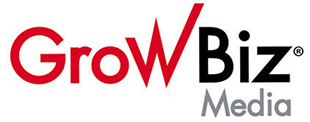The Providing Urgent Maternal Protections for Nursing Mothers Act (also known as the PUMP Act) extends the protections for breastfeeding mothers in the workplace, providing them with better access to break time and private spaces to pump. In almost every industry, employers must provide breastfeeding mothers with “reasonable break time” and “a private space other than a bathroom” to pump for a period of one year after their child’s birth.
The PUMP Act is important because it provides necessary protections to breastfeeding mothers, ensuring that they can care for their children without jeopardizing their own privacy. Employees who are not provided with appropriate spaces for pumping can file complaints with the Department of Labor or even file a lawsuit against their employer, ensuring they are afforded the proper protections.
Many businesses are beginning to wonder how The PUMP Act applies to them. The truth is that most companies are affected in some way. However, even for companies that are not affected The PUMP Act has opened the door to a conversation about the need for private, safe and sanitary lactation spaces in public settings.
How the PUMP Act affects event organizers
Any company with more than 50 employees — which often includes event organizers — will have to provide lactation accommodations under The PUMP Act. However, there are also benefits to event organizers who implement lactation stations for their attendees. Because of The PUMP Act, companies and professionals are becoming more attuned to the needs of breastfeeding mothers. This helps establish certain expectations and standards, which they will bring with them to the conferences and professional events they attend.
Since many conference spaces do not yet have dedicated spaces for breastfeeding mothers to pump, these women face a difficult decision: risk pumping in an unsanitary or semi-public place, miss valuable events and opportunities by returning to their hotel room to pump, or be faced with the difficult of choice to either stop pumping all together or simply decide to not attend the event as a whole.
With this in mind, investing in safe lactation stations for breastfeeding mothers is an important step towards fostering inclusivity at these events. Giving mothers a safe, private, comfortable, and convenient space to pump will ensure they do not have to miss more of the conference than is absolutely necessary – and may help them make the decision to come in the first place.
No doubt, cost is one of the reasons companies and conference centers may not be eager to build custom lactation accommodations. Undergoing construction to create a permanent space is not just expensive, it can be disruptive and take a long time. However, portable lactation stations avoid the expense and disruption that comes from construction, and can be a quick solution in a variety of settings.
The portable lactation stations include all the features and functions a pumping mother will want, including the sink for the necessary washing of pumps and hands, the private fridge for the safe storage of breastmilk, and the custom-made lactation chair, which provides comfort for the duration of the pumping session. Investing in a portable lactation station is a wise choice because it is affordable and doesn’t require any extensive installation fees. Because it is portable, it can be easily moved, finding its home in the most optimal location regardless of the layout for individual events. Offering this option to future attendees can have a very positive effect, giving the event an inclusive feel and making it inviting for breastfeeding attendees.
What a proper pumping space should include
The first and most fundamental quality needed for a lactation space is privacy. Many event spaces currently only offer semi-private spaces for breastfeeding mothers to pump, such as bathrooms or break rooms. A fully private space can be created by retrofitting an existing room with the appropriate furniture for a mother to pump, and by ensuring that all windows are covered to provide the mother with discretion. If this is not feasible or convenient, a lactation pod can be placed to create instant privacy in strategic locations.
A lactation room or pod should contain several pieces of essential furniture. Since mothers pump for 20-30 minutes at a time, having a comfortable, supportive chair is necessary, so that mothers can pump comfortably without any danger of spillage. There should also be an armrest or table for mothers to place their pumps, bottles, and work materials, as well as power outlets for charging pumps and devices.
Lactation stations should also include refrigerators for breastfeeding mothers to store their breast milk in, so that they do not have to store it in communal refrigerators or carry it around in a cooler. Storing breast milk in a communal fridge may make spark some issues around sanitation or security, as others could be touching it, moving it, or tampering with it.
A lactation station should also have an area where breastfeeding mothers can sanitize their equipment and clean themselves up after pumping. The best way to do this is to have a sink in the lactation room or lactation pod that can be used solely for the purpose of pumping. It’s important to note that the cleanliness of public bathrooms and sinks can vary widely, so having mothers clean their equipment in these sinks is not ideal.
Although event organizers are only responsible for providing their employees with pumping spaces for employees if they have more than 50 employees, providing these spaces for event attendees could help make the space more inclusive for breastfeeding mothers. This could help boost attendance by making breastfeeding mothers more comfortable and preventing them from having to miss opportunities by finding a place to pump.
Stephanie Boms is the CEO and Co-founder of Nessel.



